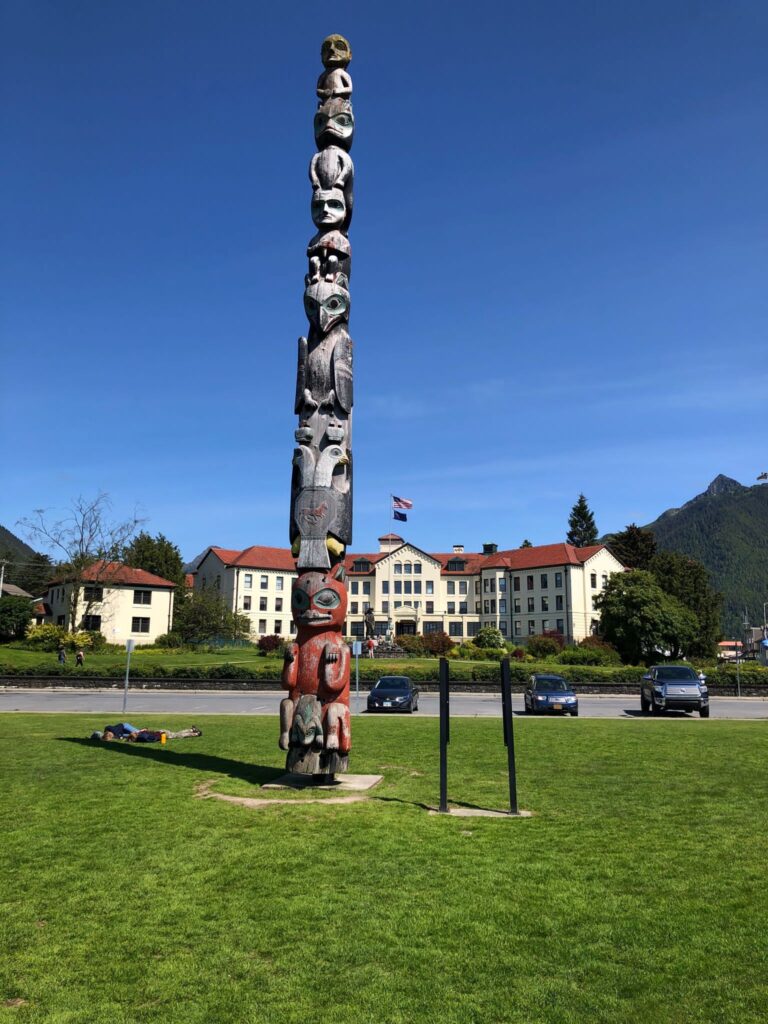By Tim Lambert
Early Alaska
The first human beings arrived in Alaska about 13,000 BC. At that time, Alaska was part of a land bridge that extended across to Siberia. People followed the herds of animals they hunted. Europeans arrived in the area in the 18th century.
In 1741, a Dane called Vitus Bering led a Russian expedition to Alaska. They discovered great wealth in Alaska in the form of animal furs. Unfortunately, they also brought diseases to which the native people had no immunity.
Yet the Russians continued to explore Alaska. In 1759-1762 Stephan Glotov sailed to the Aleutian Islands. On a second expedition in 1762 Glotov landed at Unalaska. In 1763 he reached Kodiak Island. In 1784 the Russians founded a settlement on the island. In 1788 Russian Explorer Gerasim Izmailov reached Yakutat Bay. In 1804, they established a settlement at Sitka.
Meanwhile in 1778 when British explorer Captain Cook sailed there. (Cook Inlet is named after him). George Vancouver sailed to Alaska in 1794.
However, by the 1860s, the Russian Empire had lost interest in Alaska. Over-hunting had depleted the supply of furs, and it was difficult to supply bases such a long way off. So they decided to try and sell Alaska to the Americans. In 1867, US Secretary of State William Henry Seward signed a treaty to buy Alaska for $7.2 million – less than 2 cents an acre. However, it took 6 months to persuade Congress to ratify the treaty. Alaska formally passed to the USA on 18 October 1867.
Modern Alaska
The new area was at first called the Department of Alaska. In 1884, it was changed to the District of Alaska. Meanwhile, in 1878, the first cannery opened in Alaska.
In 1880, gold was discovered in Alaska, in Juneau. Then, in 1896, gold was discovered in Yukon, but the easiest way to reach it was to sail to Skagway in Southeast Alaska. In 1899, gold was discovered in Nome in Northwest Alaska. Another gold rush began in 1902 when gold was discovered near Fairbanks.
In a single decade, the population of Alaska soared. In 1890, the population of Alaska was just over 32,000, but by 1900 it had surpassed 63,000. Then, in 1912, Alaska became a territory. Anchorage was founded in 1915, and Denali National Park was created in 1917. The Alaska Railroad was completed in 1923. President Warren G Harding went to Alaska to drive in a golden spike in a ceremony to mark the event.
Women in Alaska were given the right to vote in 1913. In 1937, Nell Scott became the first woman to serve in the Alaska legislature.
An Agricultural College and School of Mines opened in 1922. It became the University of Alaska in 1935.
In June 1942, the Japanese bombed Dutch Harbor in the Aleutian Islands. They also took the islands of Kiska and Attu. The Americans landed on Attu on 11 May 1943. By 30 May, they had retaken the island. The Japanese abandoned the island of Kiska in August 1943. During the Second World War, military bases were built in Alaska, and as a result, some Alaskan towns greatly increased in size. Meanwhile, the Alaska Highway was built in 1942.
In 1957, oil was discovered in Alaska at Swanson River, on the Kenai Peninsula. Then, on 30 June 1958, the Senate passed the Alaska Statehood Act. On 3 January 1959, Alaska became the 49th state of the United States. The first governor of Alaska was William A Egan.
On 9 July 1958, an earthquake in Alaska caused a tsunami 524 feet tall in Lituya Bay.
Then, on 27 March 1964 (Good Friday), Alaska was struck by a devastating earthquake. It measured 9.2 on the Richter Scale, making it the most powerful earthquake recorded in North America. It killed 131 people.
But Alaska soon recovered, and in 1968, oil was discovered in Prudhoe Bay on the Arctic Coast. To be exploited the oil would have to be transported by pipeline to Valdez and to build the pipeline disputes with the native people over land would have to be settled. They were settled by the Alaska Native Claims Settlement Act of 1971. The native people relinquished their claims in return for nearly $1 billion and 44 million acres. The Trans-Alaska Pipeline was completed in 1977. As a result, the 1980s were a time of prosperity for Alaska.
However, on 24 March 1989, a tanker called the Exxon Valdez ran aground, spilling 11 million gallons of oil. Since then, the oil industry in Alaska has declined in importance. However, today tourism is a major industry in Alaska. Meanwhile, in 2006, Sarah Palin was elected the first woman governor of Alaska.

A totem pole in Sitka
Last revised 2025